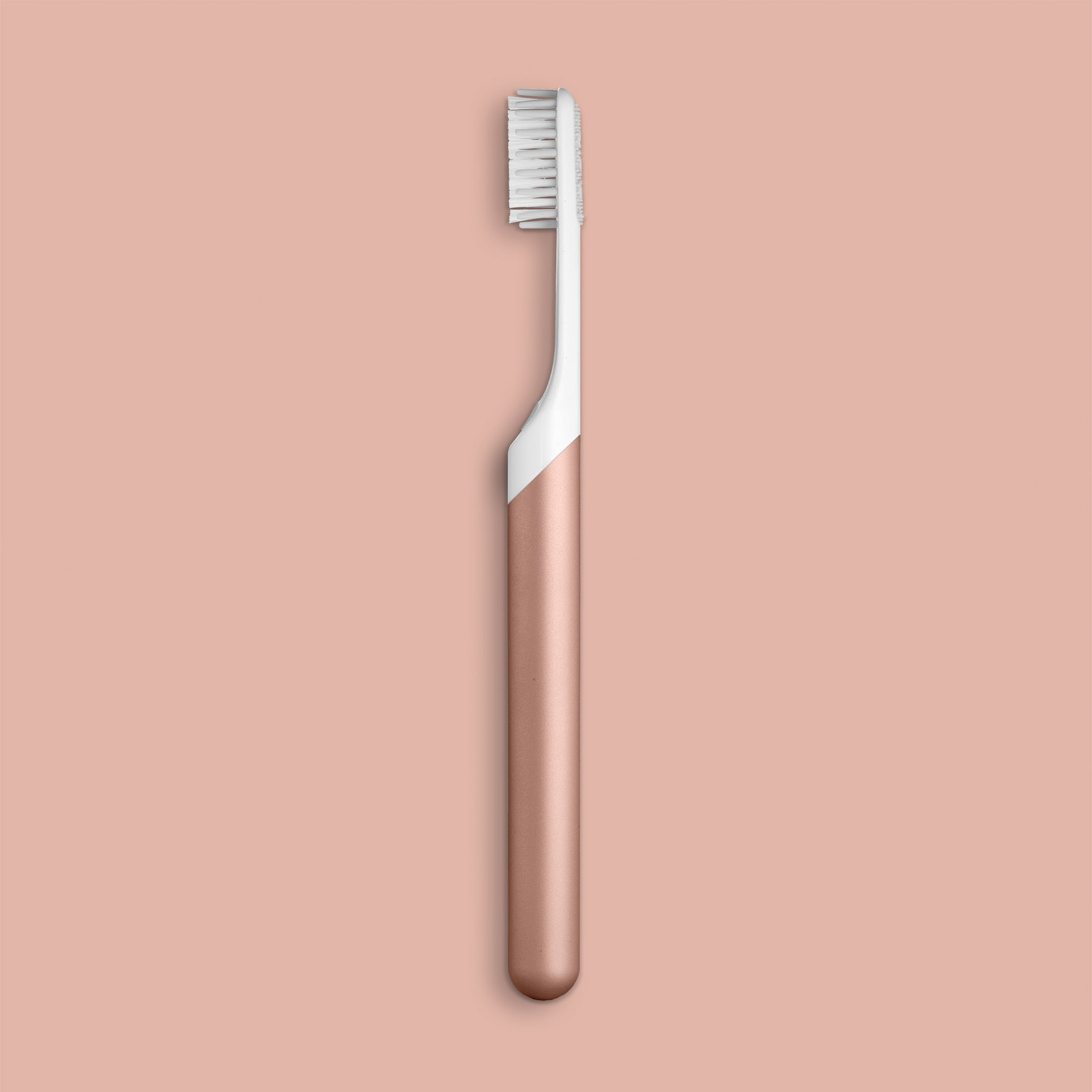
quip includes a convenient travel cover (that doubles as a stand and mirror mount) and a slim aluminum handle that's waterproof and shower-safe. The lightweight, compact design features sensitive sonic vibrations and a built-in timer with 30-second pulses that guide an effective 2-minute routine.

It's one of the first electric toothbrushes accepted by the American Dental Association, and is proven to help remove plaque, and help prevent and reduce gingivitis. Those for the Gleem, Smile Direct Club, and Quip brushes can run anywhere from $5 (with a subscription) to $10 or more each (without one).The quip electric toothbrush gives you all the features teeth need (and removes the gimmicks they don't) to make better brushing simple and affordable. Replacement heads for the Arm & Hammer and Oral-B drugstore brushes generally cost $4 to $6 each.
#Quip metal electric toothbrush pro
The other key difference between the pricier subscription brushes and the cheapies is that only the former have onboard two-minute timers.Īfter two years of replacing brush heads and batteries, though, we found that the Quip and other $25 brushes still cost roughly double what the Oral-B Pro-Health Battery Power Toothbrush does, and a third more than the Arm & Hammer Spinbrush Pro Series.

(Quip offers a lifetime warranty on the brush handle for customers who maintain a subscription.) By contrast, changing out the brush head and batteries on a $25 Quip handle four times a year for two years adds up to about $60, with the discount provided by a subscription. Replacing the Colgate 360 every three months for two years totals roughly $48. You can’t just change out the head when it’s worn-you have to toss the whole brush. That’s especially true in the case of the Colgate 360 Floss-Tip Sonic Power Toothbrush, for which there are no replacement brush heads. Over two years of ownership, the price difference between the fancy, $25 brushes and the gaudy, sub-$10 ones shrinks. According to our research and the experts we spoke with, a timer that helps ensure you brush for the right amount of time is the only non-negotiable feature of a quality electric toothbrush. The other key difference between the pricier brushes and the cheapies is that only the former have onboard two-minute timers. Pretty, for a price: the $25 Gleem (at left) and the $40, metal-handled Quip electric toothbrushes Photos: Rozette Rago The $40 metal-handled Quip, in particular, is especially beautiful. By contrast, Quip, Gleem, Sonicare, and Smile Direct Club’s The AA- or AAA-battery–powered brushes are much sleeker. These bulky, brash brushes were already dated-looking when they were first sold, their neon plastic bodies clashing with tasteful bathroom backsplashes worldwide.

The AA- or AAA-battery–powered Colgate, Arm & Hammer, and Oral-B brushes found on nearly every drugstore shelf are garish and clunky. Yet there are some key differences between the $25 subscription brushes and the sub-$10 brushes, and not just in price. The takeaway: Brushing with the $25+ Quip and a popular, $6 Colgate brush feels roughly the same. We decided to compare the trendy Quip with three similarly priced competitors (from Gleem, Smile Direct Club, and Sonicare), as well as with three drugstore cheapies (from Arm & Hammer, Colgate, and Oral-B), to find the best of the AA- and AAA-battery–powered bunch. And this brush could make sense for travel, should you wish to leave a bulkier Oral-B or Philips Sonicare (and its charger) at home.
#Quip metal electric toothbrush manual
Still, lots of people love the Quip, particularly because of its streamlined handle, which makes it feel more like a manual brush to hold and store. (We do, however, think the company’s smaller version is a great choice for kids.)

For this and other reasons, we don’t recommend the Quip (that sleek, shiny brush, third from the right, above) as an everyday electric toothbrush for most adults. Compared with the rechargeable electric toothbrushes Wirecutter recommends, the AAA-battery–powered Quip produces much weaker vibrations.


 0 kommentar(er)
0 kommentar(er)
